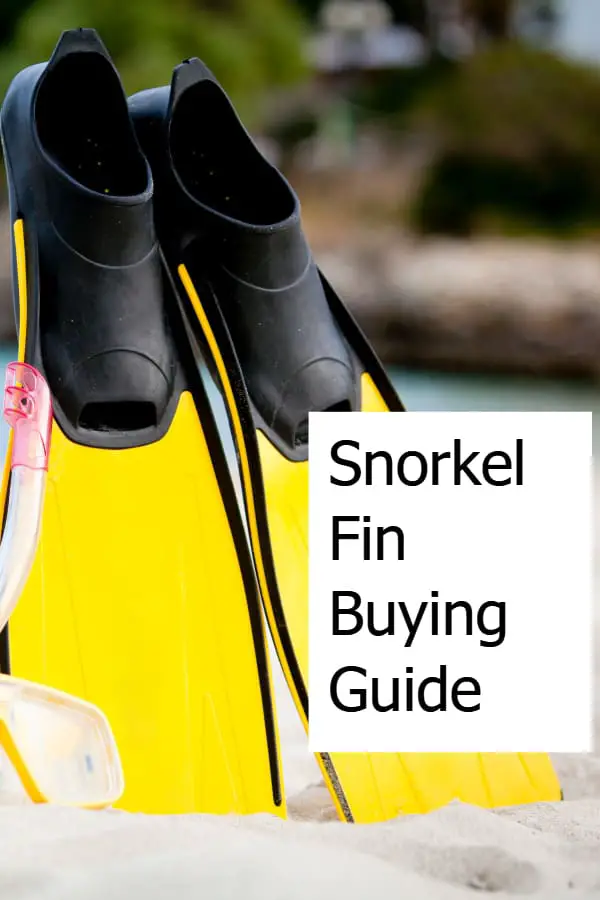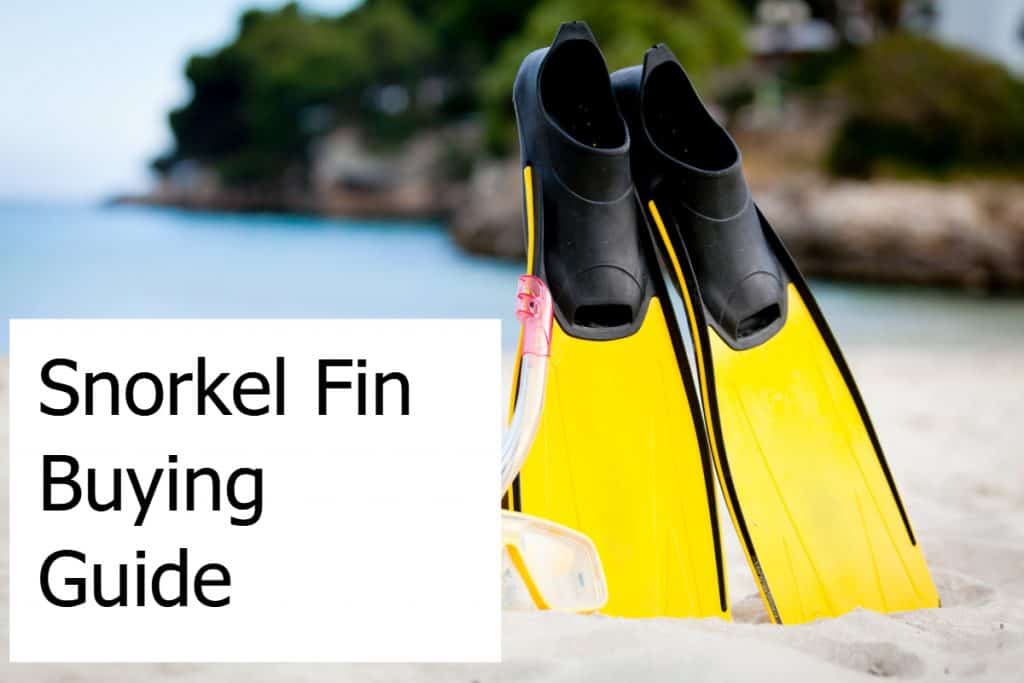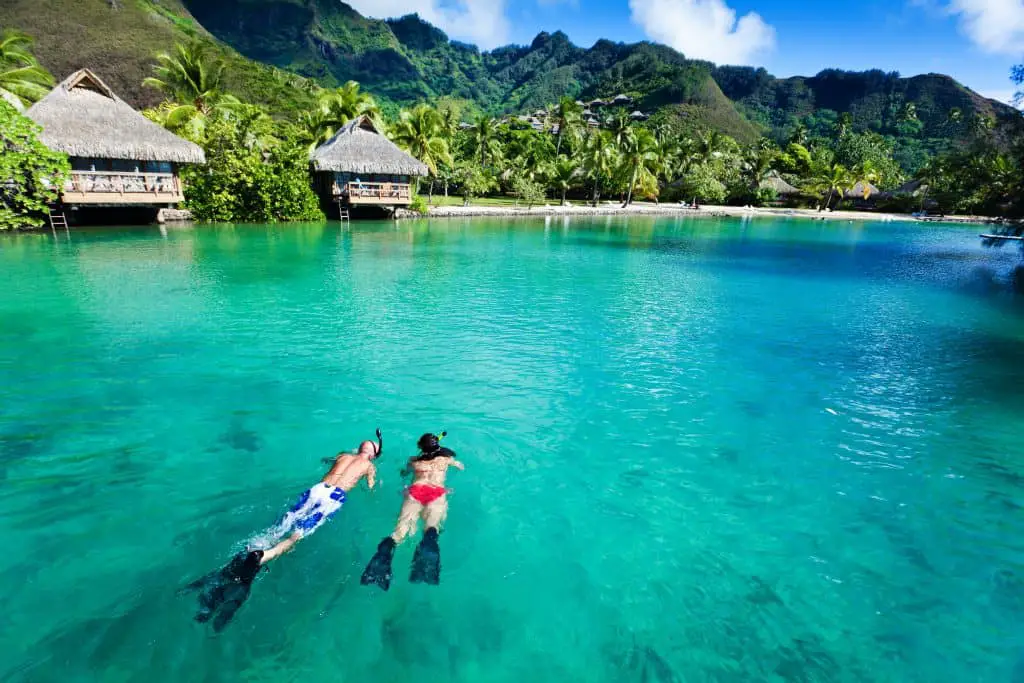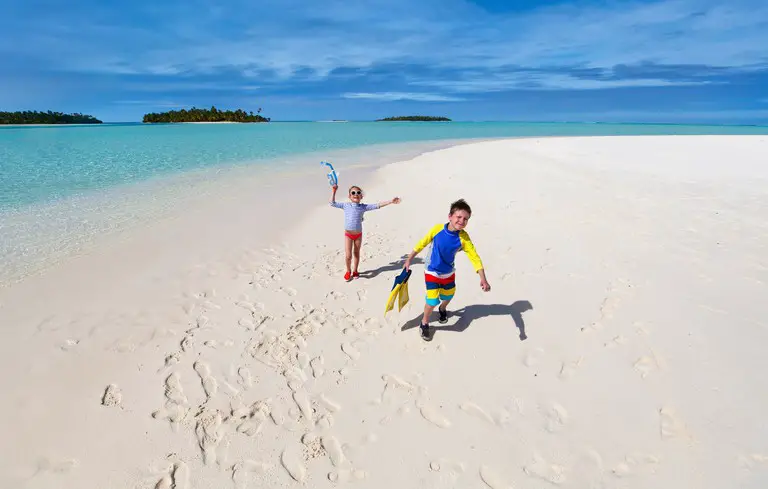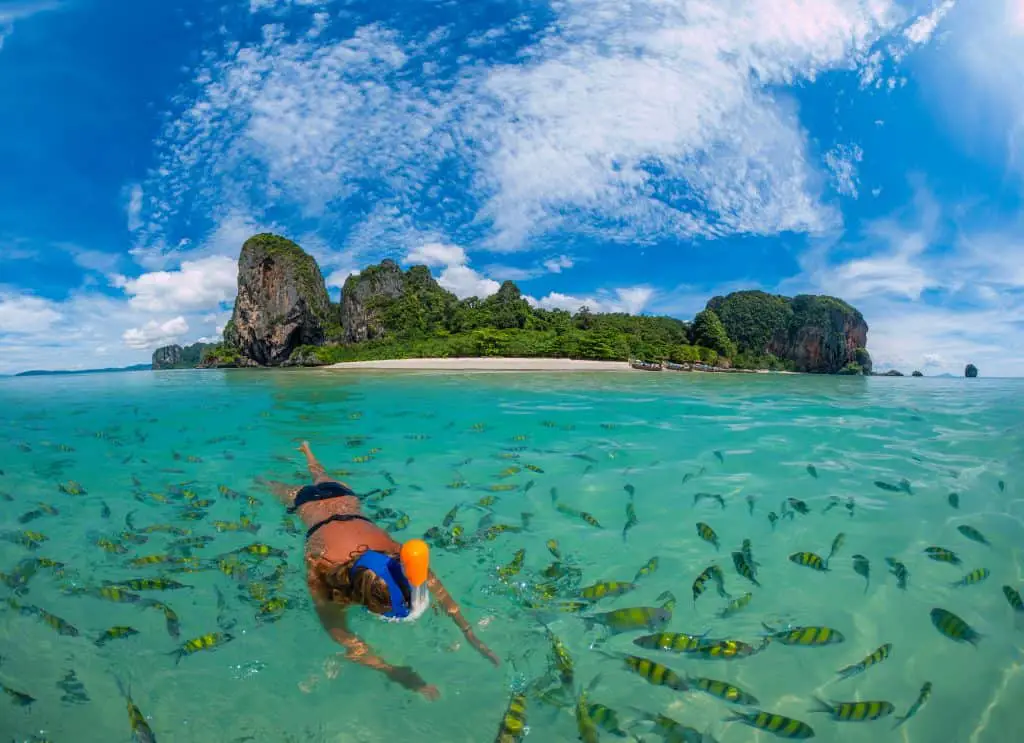Snorkel Fin Buying Guide
Using fins makes snorkeling a lot easier and more relaxing. Yet, there are a few things you have to think about and consider before you grab a pair of fins.
The factors to consider are:
- Length of fins
- Split or paddle fins
- Open-heel or closed fins?
- Correct sizing
Once you have answers to these considerations, you’ll be able to go out and get your new pair of snorkel fins!
Many snorkelers often grab a pair of scuba diving fins even though there are fins made explicitly for snorkeling. These are usually easier to handle and use and much easier to travel with.
You might be wondering why it would even be important to think about those snorkeling fins. A good pair of fins can make the difference between you going out onto the water for an hour or a few hours. Fins that don’t fit well or that don’t do their job will tire your legs or even cause cramps in your legs. Choosing a good pair of fins for snorkeling will help you with enjoying your snorkeling excursion without those problems.
Guide to Finding Snorkeling Fins
When looking for snorkel fins, you should consider a few factors besides your favorite color… 😉
Long Fins or Short Fins?
As the names of those types of fins already give away, they are either short or long. Both have advantages and disadvantages so have a closer look at the following differentiators.
Long fins usually measure somewhere around 25 inches. Some are a couple of inches longer, others a couple of inches shorter. Let’s also not even think about freediving fins here which are substantially longer yet again.
Short fins are much shorter and measure anywhere between 15 and 22’ish inches. No law regulates these so you might even find shorter ones than that.
You’ll usually find more long fins than short fins. The reason being that scuba divers only use long fins and as such it’s easy to see a large selection. The most significant advantage is that they create great thrust even though you don’t have to put that much energy in.
The high thrust does not only help you with speed, but it also is excellent support in currents. Even when snorkeling against a current you will be able to move in your desired direction without having to work too hard.
The blades, also on short fins, are made from flexible silicone compounds. They are stiff in some places and more flexible in other areas based on the underlying design of the manufacturer.
The disadvantages of long fins are that you’re having a hard time traveling with them. You might need a special bag for long fins, or you might even leave them at home and rent a pair when you arrive. Another downside is that all the length results in additional material. This ends up making some of these fins rather heavy which can become annoying if you carry them around for a while or also negatively impact your traveling.
Shorter fins have advantages and disadvantages which are pretty much the opposite of the long fins. They are easy to travel with as they are short and not that heavy.
On the flip side, they are harder to use as they produce less propulsion. This results in less speed, and you will have to work harder when swimming against a current. The manufacturers counter this specific downside usually by making the blade a little wider which results in more thrust being produced with each kick.
One definite advantage that short fins have over long fins is the simple fact that you can pretty easily walk with them on land. That makes it easy to put them on and then walk into the water. Long fins are close to impossible to walk with on land, so you have to put them on after you enter the water. Except indeed if you are on a boat and jump directly into the water.
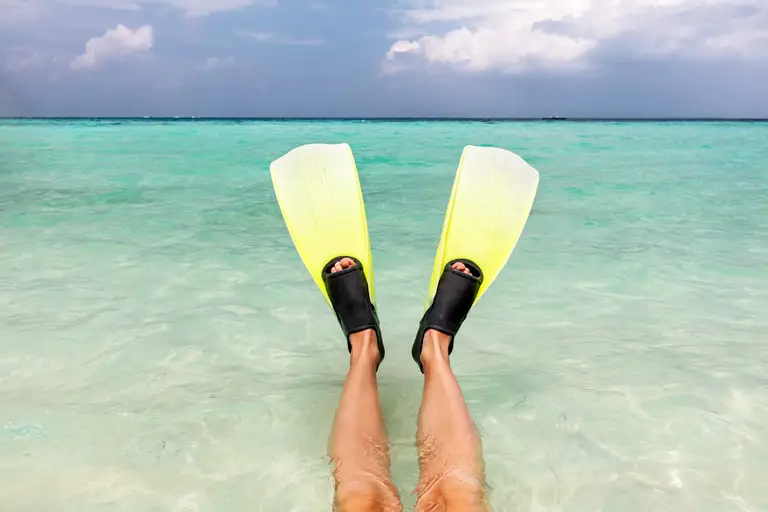
Split Fins or Paddle Fins?
If you decided on short fins then you’re in luck. There’re no split fins in that case!
Otherwise, you have to decide. Either a paddle fin or a split fin. The paddle fin is the one everybody knows. The blade is one piece.
Split fins, on the other hand, are paddle fins that have a long lengthwise cut in the blade. This allows the two ends of each blade to move independently. The thought is that this creates a swirling motion that provides thrust with less energy being required.
The debate on whether split fins are better or paddle fins have the upper hand exists since both types of fins have been available. However, no system has such an advantage that you’d be able to choose a winner.
Split fins require less energy to produce thrust. However, they are usually not able to provide as much thrust as a paddle fin. So, you might spend less energy on your propulsion, but you end up with less thrust.
Paddle fins also provide more maneuverability. They allow quicker turns and moves. Most snorkelers and divers prefer paddle fins as they give them a better feel of control. There’s more ‘feedback’ from the kick than you get from split fins.
Most snorkelers will not have a problem with either type of fin. Split fins have a slight edge when you want to go for longer swims. Paddle fins will provide better control and are better in currents.
Open or Closed Heel?
Closed heel fins are basically like a pair of shoes with flippers. You slip into them and then they fit. Well, that’s at least the thought.
Open heel fins have an area where your foot is inside a foot pocket, and then there’s a strap that goes behind your heel. The strap can be adjusted, and therefore it’s usually easier to put these types of fins on and keep them on. They do often provide better connectivity and control of the foot to the fin.
Open heel fins also allow that you can wear booties in them. That way you can make sure that your feet stay warm even if you’re snorkeling in colder waters. Closed heel fins are typically worn barefoot and therefore they are better suited for warmer waters.
Overall, many divers and snorkelers prefer open heel flippers as you get a better fit in them. The strap on good fins can be replaced in case it rips. This way an open heeled pair of fins can be a better long-term investment.
Sizing
Finding the right size can be somewhat tricky. Fins typically don’t come in sizes that we’re used to from buying shoes. Most fins come in sizes like S, M, L, XL, XS, and even XXS. That doesn’t translate well to the typical shoe size.
When you’re looking at fins from a reputable manufacturer, then you will usually get a conversion chart that outlines the sizes the fins are offered and how they correspond to shoe sizes. If you go by that chart, then you should be able to find a well-fitting pair of fins.
If you often snorkel in colder waters and you require to use a bootie, then it can be advisable to go for one size larger. That way you end up with a comfortable fit of the fin even with the booties on your feet.
Conclusion
There’s no pair of fins that’s the right fins for everybody. You have to consider where you’re typically snorkeling and how you get to that place.
Come up with the answers to the points outlined above and you’ll be able to pick the best snorkel fins that will make your next snorkeling trip a blast!
